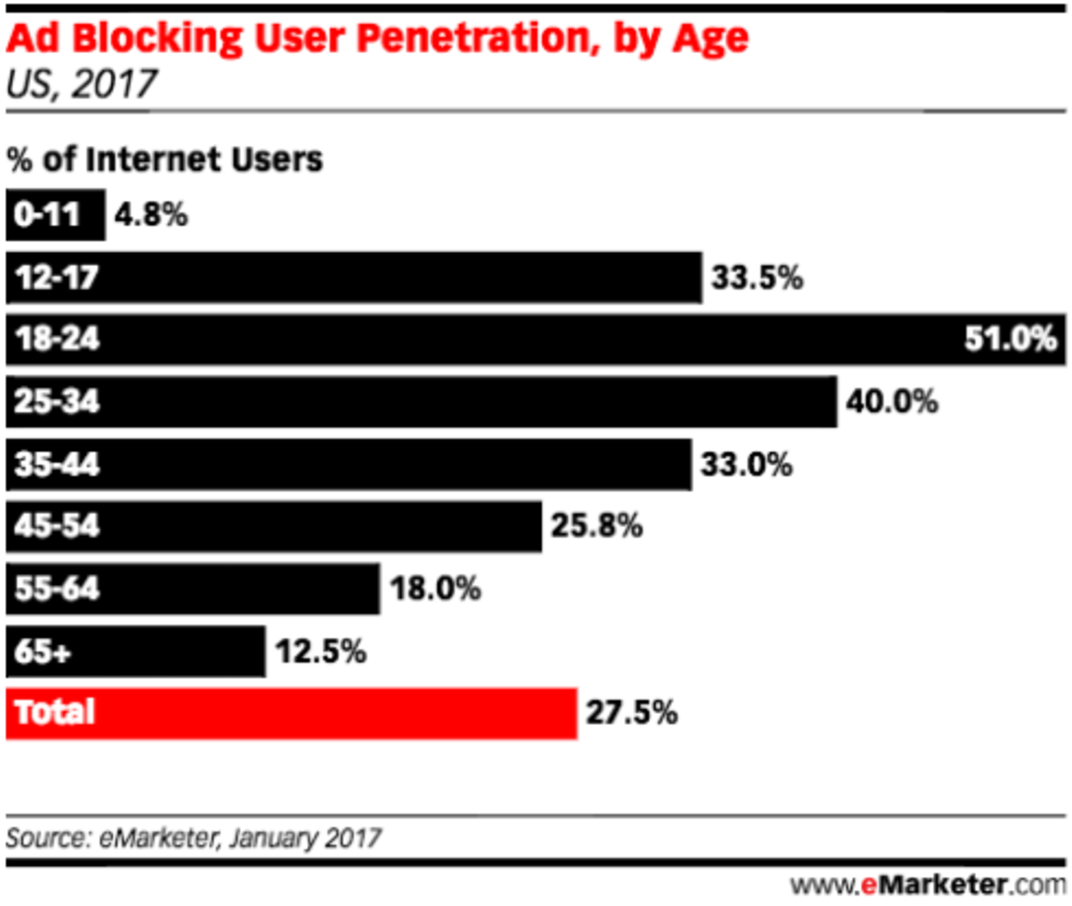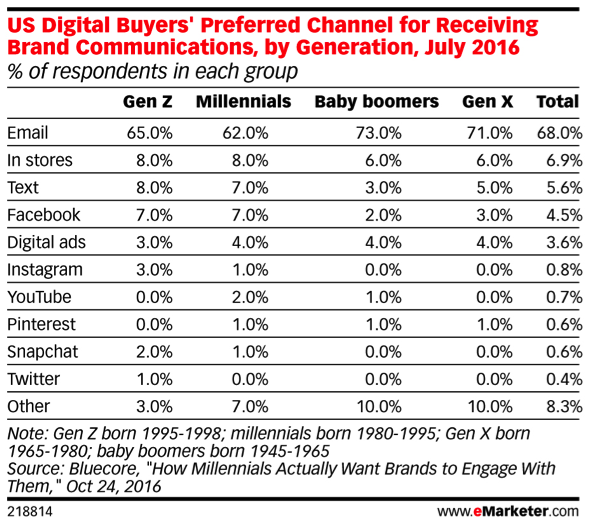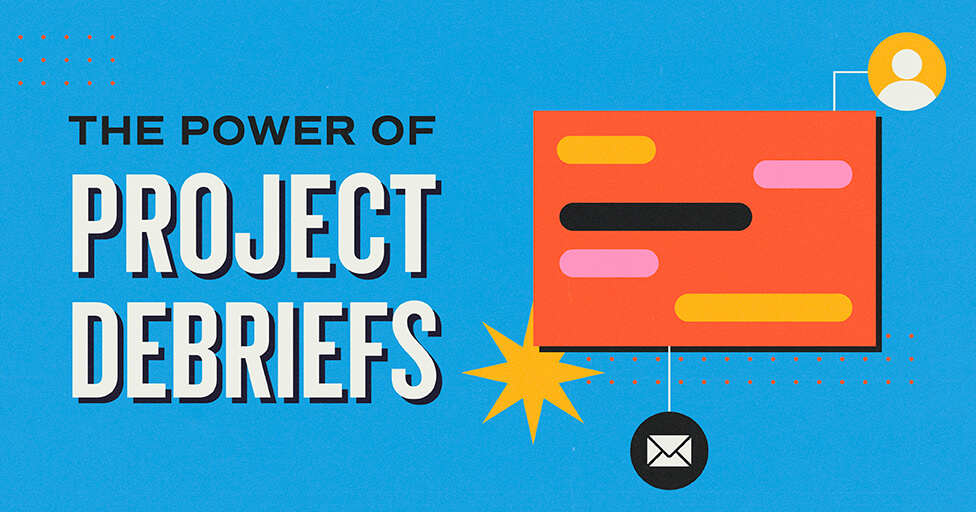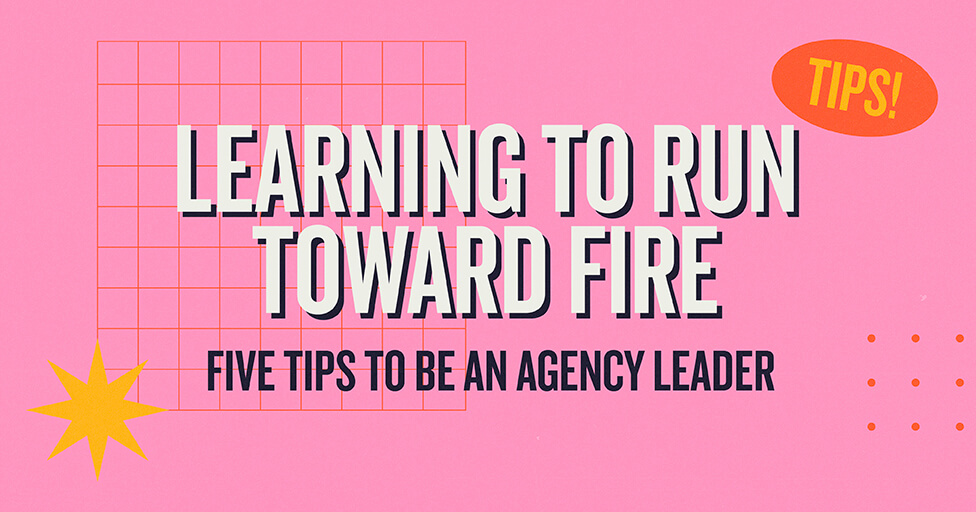
This isn’t meant to scare anyone working in the paid media realm, but let’s share some quick facts.
- Chrome will block ad types deemed intrusive or obstructive to a user’s browsing habits.
- Apple’s upcoming OS release will disable autoplaying video ads and will introduce Intelligent Tracking Prevention which limits tracking beacons’ abilities to follow users around the internet.
- Over a quarter of the web is using some sort of ad-blocking technology—including over 50% of 18 to 24 year olds.

If you take these at face value, you may have your own “Chicken Little” moment. Is this the end of paid media as we know it? Will we still be able to target users with the highest propensity to engage with our message? Will our ability to draw a user down the conversion funnel be limited by these ongoing changes in our industry? Will they even see our message?
Let’s take one step back before we go around yelling that the sky is falling and address these one by one. If technology has taught us anything, it is just how quick to react and adapt to change it can be. Paid media technology is no different.
Google’s Ad “Filtering”
Google is part of the Coalition for Better Ads—a group which seeks to “develop and implement new global standards for online advertising that address consumer expectations.” They have identified 12 types of ads which cause a poor user experience. Site owners and publishers will be notified if their site is being deemed obtrusive with the ads it’s serving and will have an opportunity to fix the issues to remove the embargo.
The underlying themes of the ad types deemed offensive are1:
- They interrupt the flow and block the user’s access to the content.
- They use too much of the screen space which renders user navigation difficult.
- They create confusion through automatic sound or video playing.
An ad should seek to add value to a user’s online experience not detract from it. So here we have Google doing the industry a favor by penalizing those that give us a bad name. Legitimate advertisers should be happy with the approach Google is taking.
Apple’s Upcoming OS Updates
The first action—disabling autoplaying videos with sound—is in line with what we said above and isn’t something anyone should be concerned about.
The second part could be a bit more impactful. For now this only impacts desktop macOS High Sierra Safari users.2 While this isn’t a large part of overall internet traffic and media vendors can turn toward or away from specific browsers, we would be foolish to simply ignore what Apple is doing here.
The Intelligent Tracking Prevention technology will limit the ability to place third-party cookies on a user’s device. This would severely limit, if not stop completely, the cookie-based retargeting of users with your advertising message as they browse the web. (Retargeting is a proven method of spending advertising dollars efficiently, and when done properly, is not intrusive or annoying to end users.)
That sounds like a pretty big bummer. The direct impact will soon be known; however, many media vendors no longer need to rely on cookies in order to serve ads to people most likely to engage with their message across their devices and across the web.
The Proliferation of Ad Blocking
It’s true—more and more people are blocking advertisements. In the grand scheme of things, it’s still a small percentage of ads getting blocked, but the trend is increasing. Someone with ad-blocking software won’t ever see your standard banner unit. While some ad-blocking technology companies seek to hold advertisers for ransom (pay us $$$, and we’ll let your ad through), others are trying to work with publishers in order to allow non-annoying ads through (kinda like Google’s approach).
A well-executed integrated marketing campaign can still reach these ad-blocking users. Let’s take a look at some ways of doing so:
- Email is still a solid choice for direct-to-consumer marketing. Whether it’s your own list or a purchased rental, email communication is not impacted by ad-blocking technology and is still viewed as a preferred means of receiving brand communications.

- Influencers can help carry your message without the use of ad servers, negating any ad-blocking technology.
- Native content is viewed by site visitors as less intrusive and generally experiences very high engagement metrics.
- Content marketing and SEO optimizations will ensure your site is being found organically and via referrals.
- Social—both paid and earned—is an effective way of placing your message in front of a targeted audience.
Needless to say, it’s a very delicate balance between wanting valuable customer information in order to meet (or exceed) conversion goals and keeping users’ privacy and browsing experience at the forefront of operations. And so the cat-and-mouse game continues.
[1] https://www.exoclick.com/google-chrome-might-integrate-ad-blocking-feature/
[2] https://www.forbes.com/sites/forbescommunicationscouncil/2017/07/13/how-apples-high-sierra-is-disrupting-digital-advertising/2/#234e75571a45
Subscribe to our newsletter
Get our insights and perspectives delivered to your inbox.


